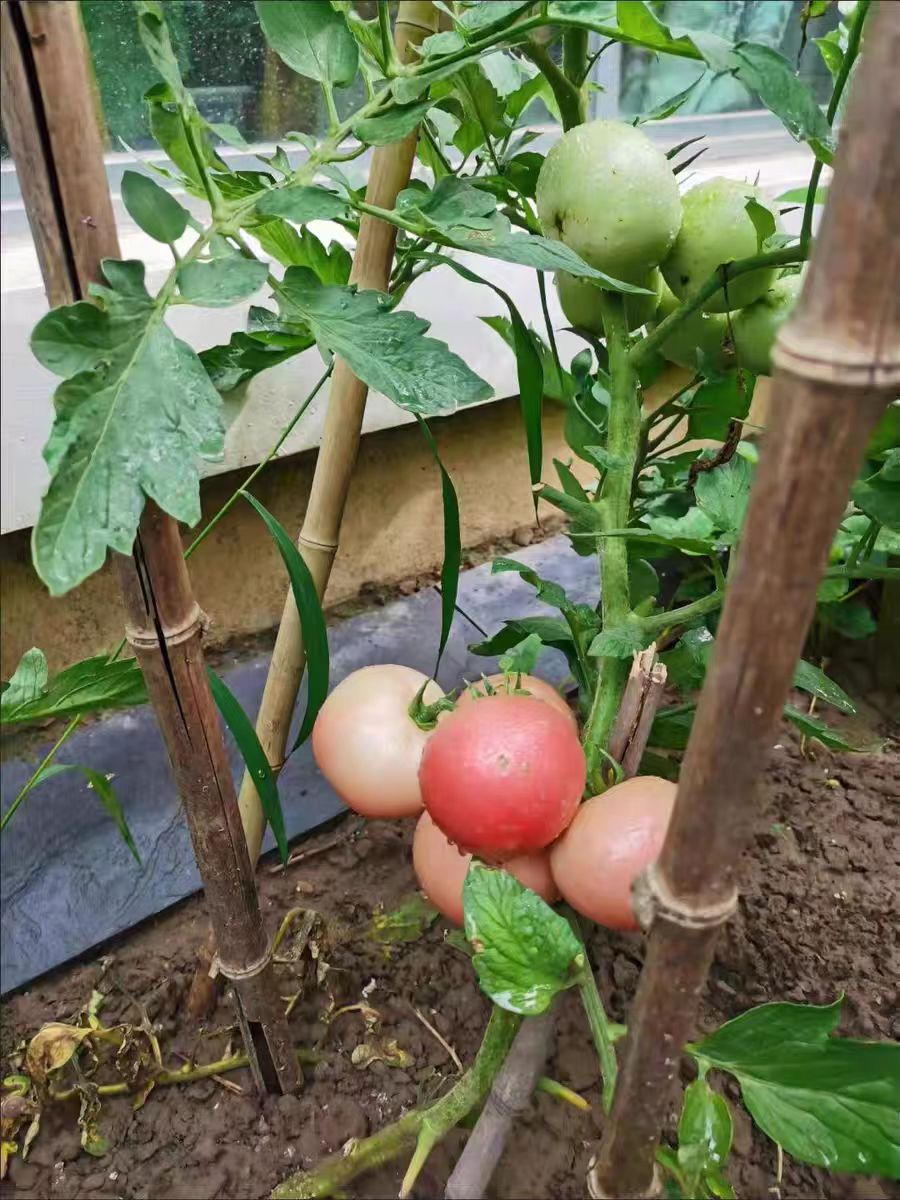During the tomato - growing process, leaf wilt is a common problem, which not only affects the growth of the plants but also may reduce the fruit yield. In fact, as long as we figure out the causes of leaf wilt and take the right measures in time, the tomato seedlings can usually regain their vitality in most cases.
Improper watering: Both excessive and insufficient watering can cause problems to the leaves. If there is too much water, waterlogging in the soil will lead to oxygen - deficiency and root rot. The leaves will turn yellow, become soft and droop from the bottom up. If there is too little water, the plant will be short of water, and the leaves will dry and curl. Especially in high - temperature conditions, the whole seedling will look wilted. Remedy: If over - watered, stop watering immediately and loosen the soil to let the water evaporate. If under - watered, replenish water in time. Do not water too much at once, but water thoroughly in several times to keep the soil moist but not waterlogged.
Light problems: When there is insufficient light, the photosynthesis of tomatoes is weak, the leaves turn yellow and become thin, and the seedlings grow thin and weak. In summer, direct strong light can burn the leaves, causing yellow - brown spots or even the whole leaf to dry. Especially the newly - transplanted seedlings are more likely to be damaged by the sun. Remedy: If there is a lack of light, move the tomatoes to a place with sufficient sunlight, ensuring 6 - 8 hours of light per day. When there is strong light, set up a shade net or move the tomatoes to a semi - shaded place to avoid direct sunlight.
Soil problems: Soil compaction will make it difficult for the roots to breathe and unable to absorb water and fertilizers. If the soil is too acidic (pH < 6.0) or too alkaline (pH > 7.0), the roots will not grow well, and the leaves will turn yellow and wither. Remedy: Loosen the soil regularly to make it breathable. Usually, apply more decomposed farmyard manure and compost, which can adjust the pH value and improve the soil quality. In severe cases, directly replace it with loose and fertile new soil.
Pest and disease infestation
Diseases: For early blight, brown spots with yellow edges appear on the leaves, which gradually merge and dry up. For late blight, water - soaked spots form on the leaf edges in humid conditions, and they quickly rot and grow white mold. For leaf mold, gray - white mold grows on the back of the leaves, and the front of the leaves turns yellow. For fusarium wilt, the leaves wilt from the bottom up, which can recover in the morning and evening, and finally the whole plant dies, and the inside of the stem turns brown.
Pests: Aphids gather on the back of the leaves to suck the sap, causing the leaves to curl and spreading viruses. In high - temperature and dry conditions, spider mites make the leaves show dense small white spots, which gradually turn yellow and fall off. Remedy: Remove the diseased leaves in time. Use mancozeb (for early / late blight), carbendazim (for leaf mold), and hymexazol for root - drenching (for fusarium wilt) for diseases. Use imidacloprid (for aphids) and abamectin (for spider mites) for spraying. Note that different pesticides should be used alternately to prevent the pests from developing resistance.
Improper fertilization: Excessive fertilization, especially excessive application of chemical fertilizers, will cause "root - burning" in the soil, and the edges of the leaves will become scorched. Insufficient fertilization, such as nitrogen deficiency, will make the whole leaf turn yellow, and potassium deficiency will cause the leaf edges to wither, and the plant will be thin and weak. Remedy: If over - fertilized, pour a large amount of clear water to dilute, and then apply some decomposed organic fertilizer to improve the soil. If under - fertilized, apply thin fertilizers frequently, using compound fertilizers or decomposed rice - washing water and manure water, and do not apply too concentrated fertilizer at one time.
Unsuitable temperature: When the temperature exceeds 35℃, the leaves transpire quickly and are prone to curling and wilting, especially in a stuffy and humid environment. When the temperature is lower than 10℃, the growth stops, and the poor water absorption of the roots leads to yellow leaves. Frost can directly freeze the leaves to wither. Remedy: Ventilate more on hot days and spray water around to cool down. In low - temperature conditions, set up small arch sheds and cover plastic films for heat preservation. Move the tomatoes indoors or cover them with heat - preservation quilts before frost.
Root damage: Accidentally damaging the roots during transplantation, or the formation of root - knots by nematodes in the soil, will lead to poor water absorption of the roots and leaf wilt. When pulling out the seedlings, tumor - like protrusions can be seen on the roots, and the seedlings grow slowly with yellow leaves. Remedy: Be careful when transplanting to protect the roots. If there are nematodes, mix abamectin granules with the soil. In severe cases, replace the soil and avoid continuous cropping.
In short, the causes of tomato leaf wilt are complex. We need to pay more attention during planting, carefully observe the symptoms of the plants, accurately determine the causes, and take timely measures. As long as we manage them carefully, tomatoes can usually grow healthily and bear rich fruits.
What's wrong with the wilted leaves of the tomatoes planted?

Share with
Tagged in :




Leave a Reply